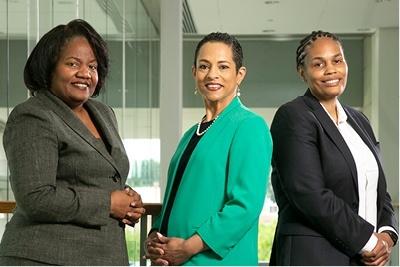
After a yearlong planning process, the School of Medicine details its commitment to dismantling racism in a new strategic plan.
Like many, Annise Weaver, MSEd, CRC, found herself feeling powerless in 2020. As she watched news reports of racial injustices occurring in the country that in turn prompted worldwide protests, Weaver wondered if it was truly possible for her to make a meaningful, lasting difference in the fight to dismantle racism.
After months of conversations about racism and racial inequity with colleagues and others across the Duke campus, she knew deep down that action, rather than conversation, was needed. Participating in a Duke educational series called Teaching & Leading Equity Now and listening to a presentation that was part of the Duke University School of Medicine’s anti-racism initiative Moments to Movement gave her a renewed sense of hope. It was the spark she needed to take action to help bring about change.
“I wanted to be a part of the movement in some way,” says Weaver, associate director of diversity, equity, and inclusion for the Department of Psychiatry and Behavioral Sciences. “I want to do anything that I can to contribute to upward movement for staff.”
Weaver partnered with Coral May, MPA, SHRM-SCP, co-chair of the school’s Moments to Movement Staff Stakeholder Committee and director of the School of Medicine’s Human Resources Service Center, to launch the ME² (Motivate, Mentor, Educate & Empower) Black Employee Resource Group (ERG). Members of the group aim to empower Black staff members in the School of Medicine, who often experience being overlooked and unheard, and to offer them resources for support and professional development.
Both the Teaching & Leading Equity Now Racial Equity learning series and ERG are examples of the type of action School of Medicine leaders hope will result from the school’s yearlong commitment to eliminate racism and stand against racial injustice.
A Process for Progress
Later that year in June 2020, Weaver watched as the School of Medicine launched the Moments to Movement initiative and began its work to better understand the root causes and harms of racism and to develop strategies to reduce racial inequity. These efforts resulted in a strategic plan called, “Dismantling Racism and Advancing Equity, Diversity and Inclusion in the School of Medicine,” which was presented one year later in June 2021. The plan is the culmination of the work of hundreds of individuals from across the school who participated in committees representing each of the school’s four main constituencies — health professions students, graduate students and postdocs, faculty, and staff.
The plan outlines five overarching goals that will drive the school’s mission over the next several years to be an inclusive, equitable, and anti-racist medical school. Several priorities support these goals, which focus on ways to enhance culture, diversity, education, research, and leadership capacity and accountability throughout the school.
“This process was deep, broad, and it was incredibly intensive,” says Dean Mary E. Klotman. “The strategic plan is a living document that will evolve, but it gives us a guide for action. It’s going to take each of us to consider the actions we can take as individuals, in our departments to support the school’s goals.”
Pathways to Staff Success
The four committees completed assessments of the school’s diversity, culture, practices, and policies. Findings from these assessments informed the plan’s goals and strategies. The assessments revealed that racial and ethnic diversity in the School of Medicine doesn’t reflect the diversity of the communities that the school serves. The committees also learned that numerous practices related to faculty support and advancement — including inconsistencies in annual reviews and appointment, promotion, and tenure (APT) practices — present opportunities for bias and disadvantage for some groups.
Associate Dean and Chief Diversity Officer Judy Seidenstein says the findings were especially telling about staff.
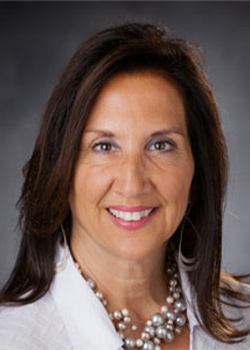
“One of our findings was the invisibility of staff, the absence of their voices, their presence, and seats at leadership tables, and a lack of investment in their development,” Seidenstein says. “The specific focus on staff as part of the roadmap of the strategic plan is critically important. It addresses a gap area for something that many people didn't even realize was a gap.”
Even though the ME² Black Employee Resource Group wasn’t created as a direct result of the strategic plan, Seidenstein and Weaver say the group’s intentions fit well within the school’s goal to support and build pathways for staff success.
Launching in August, the ERG will offer professional development and social networking engagements. Later, a mentorship program and volunteer opportunities for Black staff members will be offered. “Our primary focus will be to empower, educate, motivate, and mentor Black staff,” Weaver says. “If you're an entry level staff member, you may wonder, how do I get to be a leader? We're trying to be intentional around creating pathways.”
Weaver hopes the group will inspire others to start similar groups. Amy Porter-Tacoronte, MBA, who serves as executive sponsor for the ME² Black Employee Resource Group, adds that creating such groups is beneficial to individuals and the school.
“It fosters that leadership pipeline,” says Porter-Tacoronte, vice chair for administration and finance for the Department of Medicine. “It fosters relationships in the workplace that help people connect, network, and feel like they belong and have a voice.”
She adds: “ERGs are extremely important to make sure that we don't get stuck as an organization — unable to bridge the silos to create pathways that help talented employees identify opportunities and progress in their careers. We should see diversity across all levels, and ERGs are a good way of getting that done.”
Although each committee focused on developing recommendations that were specific to their constituents, Seidenstein says throughout the strategic planning process, common themes emerged among all the committees. Collaboration across the groups was key to developing recommendations.
“There were many pieces — the education, the knowledge gap, the need for leadership to be able to engage by deepening both their understanding and their actions, the confusion and gaps in reporting systems,” Seidenstein says. “All of these themes echoed across the groups.”
Improving Reporting Systems
One common theme was the need to improve systems for reporting microaggressions and macroaggressions. Microaggressions are defined as common insults and derogatory messages based on stereotypes that someone from a majority group sends toward someone in a marginalized group. Microaggressions are subtle, covert forms of racism, whereas macroaggressions are overt.
During the strategic planning process, the committees found that many in the School of Medicine community commonly experience macro- and microaggressions. Many feel that past processes for reporting and remediating are confusing and untrustworthy, and that bystander interventions to support the injured party are rare.

“When it comes to micro- and macroaggressions, they are some of the most difficult aspects of addressing climate,” says Johnna Frierson, PhD, who served as co-chair of the Graduate Students and Postdoc Anti-Racism Committee. “Because these are things that don’t meet legal thresholds for discrimination, they can be very hard to define sometimes even for the people that experienced them. They can be really hard to articulate.”
Despite these difficulties, Frierson says it’s important not to underestimate the toll these aggressions can take on individuals’ mental health and well-being. As a Black woman who attended predominately white universities, Frierson says she frequently experienced microaggressions. “I got questions about whether I played sports and is that why I was at a particular school, as if my academic ability couldn't be the only reason that I was in a particular space,” she says.
“Those things do matter, and they build up, especially if you’re getting that type of interaction from multiple sources and multiple people over time,” she adds. “It starts to send a message that basically I’m different, I don't belong, and who I am as an individual is not welcome and accepted here.” Frierson is assistant dean for graduate and postdoctoral diversity and inclusion and director of the Inclusion, Diversity, Equity, Advancement, and Leadership in the Sciences (IDEALS) Office in the School of Medicine.
The strategic plan includes strategies aimed at strengthening systems and resources for reporting and resolving concerns around bias, micro- and macroaggressions, racism, harassment, and discrimination. Frierson says it’s too early to say exactly what these improved reporting systems will look like, but she is hopeful for a more transparent process that will better address the problems that micro- and macroaggressions present.
“One of the things that we want to bring into our systems and our processes is this notion of restorative justice, which means that we're looking beyond just action and consequences related to a particular rule or policy, but we're looking deeper to acknowledge the harm that was caused,” she explains. “If we're focusing on the harm that was caused and not just the policies, then we really open up more opportunities for people to feel heard and embraced.”
Examining Education
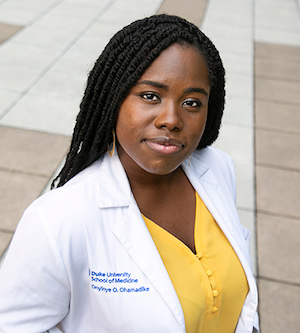
Among the findings that relate to education, the committees found that race, racism, and health disparities are often presented as standalone content rather than being holistically addressed throughout the curriculum.
Fourth-year Medical Student Onyinye Ohamadike is encouraged that the strategic plan includes strategies to address bias and racism and teach cultural humility to students in all of the school’s health professions programs.
She was pleased to see that the cultural determinants of health course she took as a second-year student incorporated conversations of race, racism, equity, and social justice into the curriculum. However, Ohamadike was disappointed that those topics weren’t included in other courses she took that year. She is slowly beginning to see things change.
“It's been encouraging to see that these conversations are starting to creep their way into the classes that are historically deemed as the more important doctoring courses,” says Ohamadike, who is also a former co-president of the Duke Student National Medical Association (SNMA) and current president of the Davison Council, the School of Medicine’s student government organization.
Ohamadike also looks forward to what the strategic plan will mean for increasing diversity among faculty, especially faculty who work with students while they complete clinical rotations.
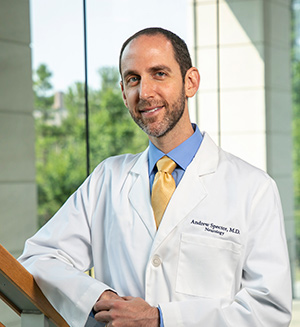
Andrew Spector, MD, associate professor of neurology and vice chair for inclusion, diversity, and empowerment for the Department of Neurology, served as co-chair of a subcommittee within the Health Professions Students Committee. The subcommittee closely examined the curricula for the health professions programs. Spector says the group identified a need to not only increase diversity of faculty who are teaching but to also allow for better oversight of lecturers’ presentations.
“Every time a new lecturer comes in, we need to ask who’s reviewing those slides to make sure that they're not going to perpetuate racial stereotypes in medicine,” Spector says. “It’s important to talk about the role of racism in health disparities. Race does need to be included in the curriculum, but it needs to be included in the appropriate medical context.”
A Framework for Departments
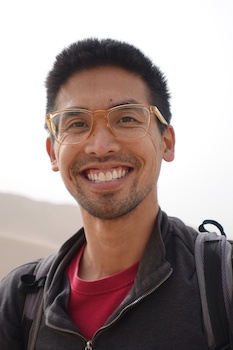
Efforts to advance racial equity and inclusion at the School of Medicine were in progress well before the Moments to Movement initiative launched last year. Diversity, equity, and inclusion departmental delegates like Spector and Lawrence David, PhD, have long worked to create inclusive environments and make systemic changes within their departments. However, they both agree that the strategic plan will bolster that work and offer a framework, particularly for smaller units looking to establish their own plans.
“Now that so many units have had the chance to reflect over the past months, we're at a good place,” David says. “When units or an entire department want to adopt their own strategic anti-racism plan, there's a really great template that they can work off of.”
David is associate director of the Duke Microbiome Center and chair of the Diversity and Inclusion Committee for the Department of Molecular Genetics and Microbiology. He says the Microbiome Center has already been working to increase diversity in its seminar series. “Many of us are microbiologists and one of the focal themes in microbiology is diversity — diversity within a community, the diversity between communities. We adopted that theme and invite speakers to celebrate thought about both the diversity of topics that they work on, as well as the backgrounds and perspectives of the researchers doing that work.”
Pressing Forward
Spector admits that measuring the success of certain aspects of the school’s anti-racism initiative may be difficult. But he believes that over time the school can make significant progress, largely because the committees placed a great deal of emphasis on acknowledging the systemic roots of racism and exploring ways to eliminate them.
“It's going to take serious implementation of substantial, meaningful changes to put in place the structures to support ongoing changes that aren't dependent on any one person,” he says. “Systemic racism is perpetuated without anyone needing to do anything about it, and the same is true for anti-racism. We need to put the system in place for an anti-racist structure to be perpetuated without the need for a single person to have to do it themselves.”
Dismantling racist systems while ensuring sustainable change will not be easy, but Spector, Frierson, and many others in the School of Medicine say they are up for the task.
“We're trying to correct something that has been so woven into many different aspects of how we conduct business that it's really going to take some time to correct,” Frierson says.
“I want to continue to press to make change,” she adds. “Even though we've had so much that we can be proud of, my true feeling is that we need to keep pushing. We need to keep going and not rest on any accomplishment that we've had up until now.”
This article originally appeared on the Duke University School of Medicine website.